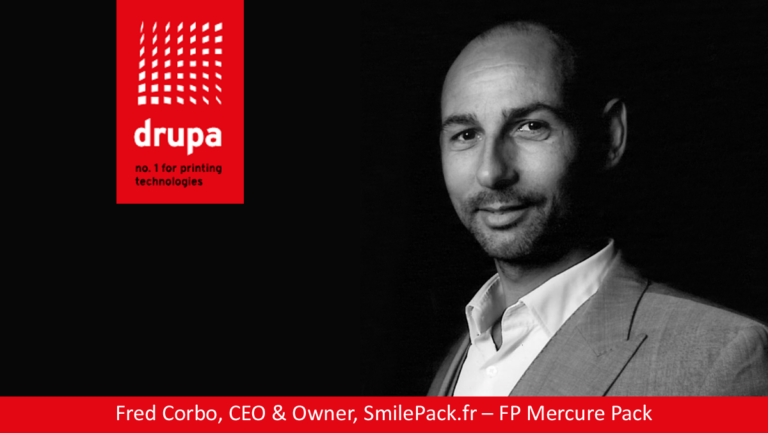Web-to-Pack and Digital Technologies - Smoke and Mirrors or Deep Current?
“The waste that is recycled best is the one that we haven’t produced.” This adage, whose perspicacity cannot be questioned nowadays, applies to all areas, particularly the packaging world. As producers of packaging, we are accustomed to explaining to our clients that the packaging that is most easily recycled is the one we haven’t produced and they haven’t brought to the market! One might say we are schizophrenic. Or rather, it is an urgent and absolute necessity to align ourselves with values, both personal and applied to our company, even if it means shocking others.
And yet, if we want to envision a sustainable and harmonious future, we must change our attitudes and discourse, offer new solutions that embody the challenges of tomorrow, disrupt deeply rooted habits, approach growth differently, and recognize that there is not just one way of doing things.
Digital technologies, which commercial printing and the label industry have embraced for a long time, will inevitably contribute, whether we are convinced or reluctant, to providing new perspectives in service of projects and needs. Behind digitalization lies not only the printing aspect, which is often seen in opposition to conventional approaches like offset or flexography, but also a world of finishing, including embellishments – varnish, foil stamping, etc -, as well as cutting, automated workflow management, and enhanced prepress control that bridges the gap between clients and production.
To embrace and perhaps anticipate these technologies, the key is to evolve the mindset, adopt a holistic approach, reconsider the relationship with clients and the market, and thus transform the company culture, allowing new capabilities to permeate and impact all levels of society.
For the past 7 years, our goal hasn’t been to prospect for selling packaging. We have been evangelizing the market. We are raising awareness among brands and stakeholders, urging them to step out of their comfort zones, embrace technological innovation, and consider that there are alternative paths, which may appear impenetrable at first but complement each other to achieve results that meet expectations. For 7 years, we have been pounding the pavement, advocating a different and intriguing message, which involves no longer operating like previous generations: embracing the constraints of cardboard manufacturers – such as minimum quantities, combining multiple references, tooling costs that exclude new market entrants, etc. – and making them our own. By denouncing these archaic concepts, though still coherent with the constraints of conventional technologies, a light shine on the path of all brands and project holders who embrace this paradigm shift: “Now, my constraints and desires take precedence!”
Digital Synergies.
Web-to-print, continuously evolving in its approach to the market, anticipating needs, and delivering highly refined customer experiences, has directly benefited from the new capabilities offered by digital advancements. It certainly would not have revolutionized the market without this contribution. However, we must not forget that Web-to-Print and Digital Technologies mutually leverage and feed off each other to progress and gain market share, forming a virtuous spiral.
In turn, Web-to-Pack benefits from the capabilities provided by digital means dedicated to the packaging and Point-Of-Sales industry. This, in turn, justifies the development of new equipment and solutions by manufacturers. The combination of Digital and Web-to-Pack undoubtedly contributes to democratizing access to simplified packaging solutions that were previously reserved for experts with minimum volumes. It now allows any brand or project holder to launch, test the market, make mistakes, backtrack, and avoid imposing heavy commitments.
Rapid Web-to-Pack Market Growth.
All these factors contribute to the rapid growth of the market share captured by Web-to-Pack, without impeding the traditional business conducted on a personal basis. Moreover, the increasing number of new product launches, special and limited editions, and the incredible trend of offering numerous variations of the same product – to cater to individual consumers’ preferred flavor, color, etc. – all contribute to the explosion of demands that require online solutions coupled with digital production technologies. And if these numerous packages are produced locally, directly within the workshops connected to the web-to-pack platform, the loop is closed.

We are witnessing the development of more or less advanced and transparent web-to-pack offerings, indicating that these solutions seem like El Dorados. However, let us not be mistaken; the production of packaging, even with digital equipment, requires well-controlled processes and technical know-how that are acquired over time, sometimes through setbacks. Some platforms simply act as intermediaries, selling products produced by local or exotic manufacturers, while others make the radical choice of controlling their processes and production in-house, despite the constraints and difficulties this entails. However, they retain all the added value within their own company.
As with any epic journey, we are witnessing the creation, consolidation, disappearance, and rapid growth of companies until the market structure solidifies. In the meantime, ingenuity and creativity know no bounds, naturally pushing the boundaries. Therefore, drupa 2024 becomes an essential event where new technologies, developments, and perhaps revolutions will be presented to serve markets, anticipating unspoken desires that are either unknown or unconscious for brands. Technological developments occur both continuously and in bursts. drupa 2024 will be the perfect opportunity to confront the complementarity of conventional and digital means, combined with Artificial Intelligence, which should be harnessed and used to our advantage, just like innovative solutions that enable the continuous reduction of Musculoskeletal Disorders and other occupational diseases that permanently affect our operators.
The remarkable ability of human beings to invent and reinvent themselves gives us hope for a promising future, albeit different from what we know today. Ultimately, one question remains: Do we wish for something better tomorrow, or can we become better ourselves? That is quite a program.





